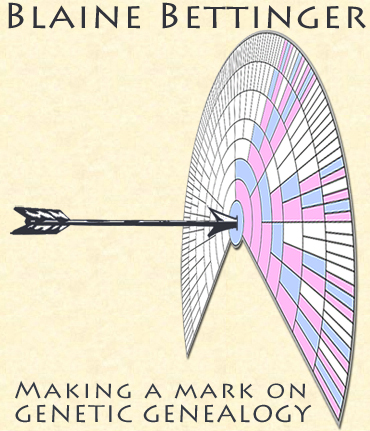How did you enter the field of genetic genealogy? What and
who influenced you? Were you an
innovator, an early adopter, or are you still a laggard who hasn’t tested? Although, I sent in my first DNA kit
in 2007, I still feel like a DNA adolescent among some of my peers. If I had to
categorize my experiences, I would rank myself in the early majority.
That first kit was inspired by the article “Shaking the Family Tree with Recreational Genetics” in Newsweek. I saw it November
2007 at my optometrist’s office and I showed it to my wife who is adopted.
Within days, Ancestry had a sale on their Y-DNA and mtDNA tests and both of us took
the plunge.
By the end of the year, I found out that my haplogroups were
I1a (old designation) and H. My wife’s mtDNA
was also an H. We were not too impressed
by these results, as they told us little; however, my haplogroups confirmed
what I already believed concerning these lines: my patrilineal
line was likely Norse when taken to its logical conclusion and my matrilineal line came from central Europe. Both haplogroups pointed in these directions. To
me, this was still a giant genetic leap.
During 2008, Ancestry partnered with two other
companies: Sorenson Molecular Genealogy
Foundation (SMGF) and 23andMe. I signed
up for accounts at both and submitted my Y-DNA and mtDNA results to Sorenson. At
that time, 23andMe only offered health and trait information for a hefty price
tag ($499), so I passed on their product, as I wasn’t interested in spending
that kind of money for this info. I had
a login account, but no data of my own – yet.
Fast forward to 2010. Wanting to know more about my genetic
ancestry, I subscribed to a wonderful online resource, the now defunct
DNA-Forums.org, and began learning about this new service at 23andMe called
Relative Finder (now DNA Relatives). DNA-Forums
also alerted me in March 2010 that 23andMe was having a month-long sale of
their product with $200 off the $499 price – it was called the Oprah sale, as
it had been advertised on her show.
Curious, I bit er spit and had my results in May. I also encouraged my brothers, mother, wife,
children, and cousins to test and thus began a process of collecting relatives’
DNA. Needles to say, I was hooked. We now have 50 of our relatives tested.
That same year, GeneTree (part of the SMGF family and also now
defunct) had a $79 sale on their Y-DNA-46 test and I began my surname project
with six participants. We were able to
confirm that, except for those with non-paternal events in their ancestry,
everyone with our surname and its variants came from a single progenitor. This was something we couldn’t have done with
traditional genealogical records as they didn’t go back far enough.
But the more I learned, the more I questioned. I was curious about the X-chromosome, as my match
to my brothers was extremely small. So
with a Google search in May 2010, I found two enlightening posts on the X at
Blaine Bettinger’s blog The Genetic Genealogist. He made it easy to
understand and his fan charts were a true blessing to me and others trying to
wrap our collective brains around the differences in transmission of the X
among males and females. For those posts on the X-Chromosome, see the following links: “Unlocking the Genealogical Secrets of the X Chromosome” and “More X-Chromosome Charts.”
Since 2010, a number of changes have occurred. Ancestry no longer offers Y-DNA and mtDNA
tests, DNA-Forums vanished out of thin air in the middle of the night in early
2012, and GeneTree and SMGF were absorbed by Ancestry and folded. Gone, gone, and gone. Several aspects of Genetic Genealogy, however,
have remained constant; one of those is Dr. Blaine T. Bettinger’s blog The Genetic Genealogist.
Just recently, I enrolled in a graduate Social Media Course
at Southern New Hampshire University for professional development. This week we
were challenged to write a case study on a “thought leader” who used social
media. Since Blaine’s blog was the first
I encountered on the subject, I wanted to analyze his work. He agreed and supplied some answers to very
specific questions that I posed.
Blaine has influenced well over a million individuals and
continues to enlighten others on a daily basis.
He has given me permission to reproduce this case study here. I hope you learn something about The Genetic Genealogist and have a great
appreciation of the power bloggers in our discipline.
Click here to see my paper, Case Study: Blaine T.
Bettinger’s The Genetic Genealogist.


